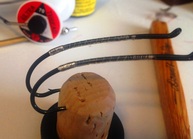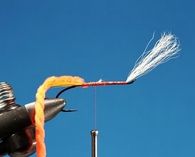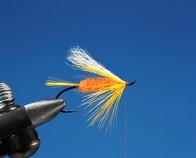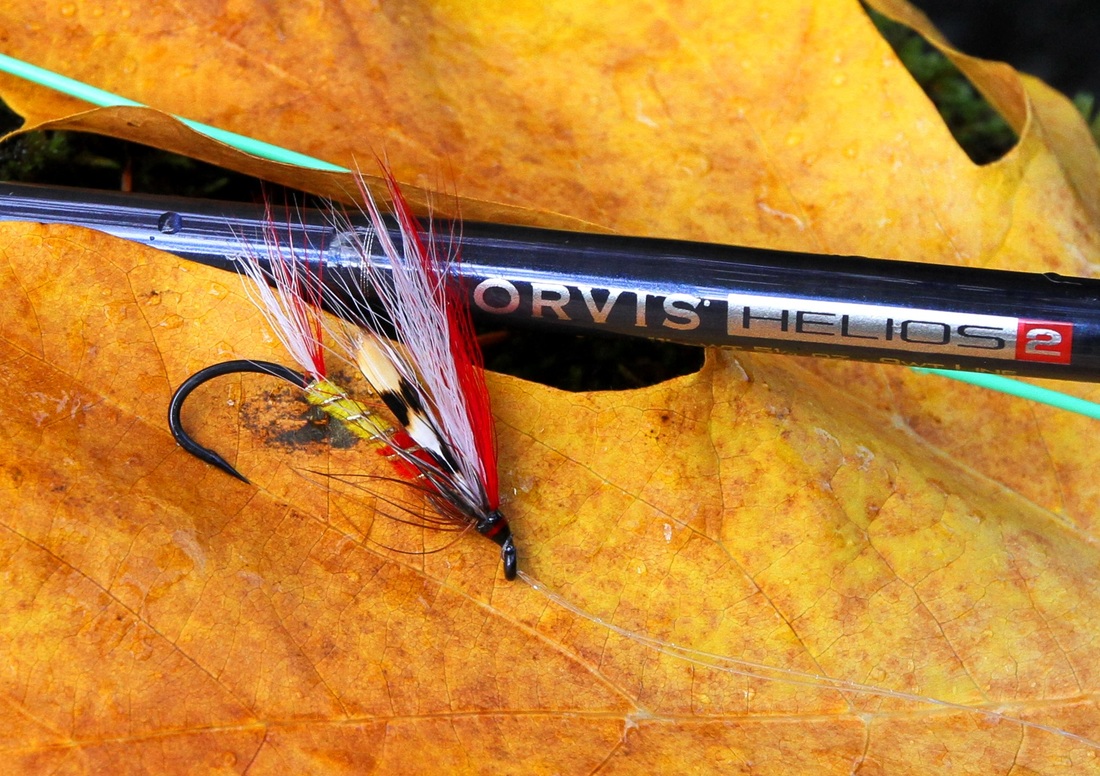
Durable Oval-Tinsel Tags
Tags made from oval tinsel can easily be torn by a fish's teeth. To prevent such mishap, once you create the tag, simply treat it with a thick varnish/head cement. These tags have been treated with a thick head cement and the hooks are now ready to become a pair of Parmachene Belle Bucktails. The Parmachene Belle wet fly--originally tied with a feather wing--was among the earliest flies used for steelhead even though it derives from Maine.
Tags made from oval tinsel can easily be torn by a fish's teeth. To prevent such mishap, once you create the tag, simply treat it with a thick varnish/head cement. These tags have been treated with a thick head cement and the hooks are now ready to become a pair of Parmachene Belle Bucktails. The Parmachene Belle wet fly--originally tied with a feather wing--was among the earliest flies used for steelhead even though it derives from Maine.
The Umpqua Special, as the name suggests, derives from Oregon's North Umpqua River. Opinions vary as the precise rendering of the wing: red over white bucktail, white over red bucktail, or red bucktail along each side of the white bucktail--all three forms had adherents in the fly's heyday. These days, very few anglers ever fish this lovely and historic pattern, but it deserves a resurgence. Tie a few up, fish them on your favorite river, and when you hook a steelhead on an Umpqua Special, the experience will leave an indelible mark on your angling soul, for you have forged a palpable, personal connection to the founders and legends of our sport.


